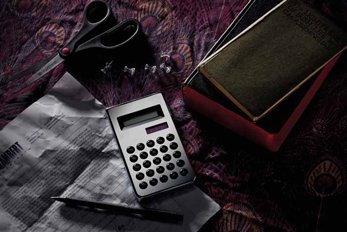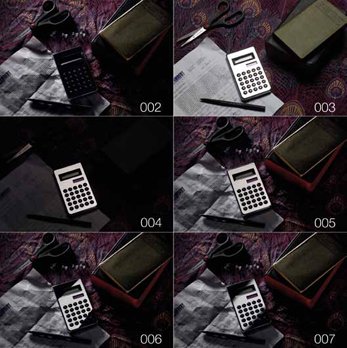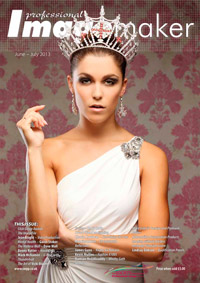articles/Lighting/calcref-page1
Dave Montizambert's Creating With Light Part 28 Calculated Reflections - part 1 of 1 2
by Dave Montizambert Published 01/06/2013

I'm writing this article in the south of France while nursing my brain back to health after a five-city Socieites' workshop tour through Ireland and the UK. The workshops consisted of eight hours of non-stop, heavy-duty lighting information, hence the sore but happy brain. It was a great experience and met some wonderful like minded people. The tour ran really smoothly thanks to Katie Myers, Podge Kelly, Terrie Jones, Juliet and Phil Jones - thanks for having me over! In my last article I discussed how Depth of Field (DoF) is an important creative component for creating depth in images and how DoF is controlled by reproduction size. Now I would like to take it further and look at how DoF can affect lighting. This past January I was teaching a lighting workshop, during the tabletop lighting section of my presentation, I threw together an impromptu (unplanned) 45-minute demo of lighting and shooting a highly reflective, chrome calculator, along with other desktop props (see Image 1); the shot is far from perfected but it serves well enough for the lesson - my ego's disclaimer for a sloppy image ;). Lighting reflective surfaces is all about controlling specular highlights - specular highlights are reflections of light sources imaged on the surface of subjects and objects and they identify surface quality, qualities such as: smooth, rough, greasy, wet, or dry. Look at Image 2 and Diagram 1), do you think this image is properly exposed? The calculator looks black but yet the rest of the set looks correctly exposed. Truth be told, the calculator isn't black, it is no colour or tone at all, it is chrome and there is no correct exposure for chrome.

Like all clean metallic surfaces, chrome has such a tightly structured molecular structure that no photons of light can penetrate and so all light energy bounces (or you could say reflects) directly off its surface. For this reason chrome surfaces have no tone or colour of their own (a subject's tone is called the Diffused Value in lighting speak), it merely takes on the tone and colour of anything that is reflected on its surface; in this case we see a portion of the black ceiling, which is above and a bit behind the set, imaged on the reflective surface of the calculator. Reflections or Specular Highlights are angle sensitive, the angle of incidence equals the angle of reflectance, in other words, since the camera is pointed on a 70˚ angle to the calculator's top face, the thing creating the reflection can be found at 70˚ in the opposite direction - the black ceiling. To answer my question, "Is this image correctly exposed?" exposure and lighting are not the same thing and lighting problems are often wrongly diagnosed as exposure problems, in this case the calculator looks black yet the set is lit and exposed correctly - this is not an exposure problem, it is a lighting problem. To light the calculator we need the light source placed elsewhere and so the 2x3 foot light-bank, which was back-lighting the set, was temporarily removed and a 48" x 48" Chimera panel frame fitted with a white translucent nylon fabric was placed overtop and a little behind the tabletop (see Diagram 2). A studio strobe was positioned above this panel so that its light would cover the panel's fabric from edge to edge and then filter through down onto the set. An incident meter reading was made with the back of the meter resting on the table next to the calculator with its white dome pointed at the above panel, the power on the strobe was dialed up and down until it created a correct exposure at f 11. Looking at Image 3 notice that this top light source shows up as a reflection on the surface of the calculator, also notice that even though the set is correctly exposed for this source, the specular highlight imaged on the surface of the calculator appears very bright, in fact it is burning out to pure white! If you look at the set around the calculator you will see that this is a correct exposure, the excessively bright looking calculator is a lighting problem not an exposure problem! To reduce the brightness of this specular highlight I could have changed size and or distance of the panel and strobe head, but I didn't like those solutions because I felt that with the set fully illuminated from the top creates rather flat lighting and being the drama-queen I am when it comes to lighting, opted for a more theatrical look.
You are currently on page 1
- Dave Montizambert's Creating With Light Part 28 Calculated Reflections page 1
- Dave Montizambert's Creating With Light Part 28 Calculated Reflections page 2
1st Published 01/06/2013
last update 09/12/2022 14:52:04
More Lighting Articles
There are 19 days to get ready for The Society of Photographers Convention and Trade Show at The Novotel London West, Hammersmith ...
which starts on Wednesday 14th January 2026





